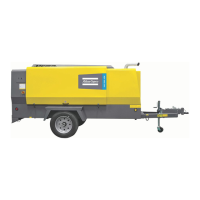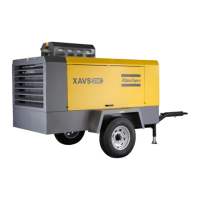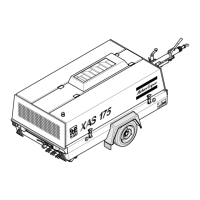- 25 -
LIFTING INSTRUCTIONS
Lifting acceleration and retardation must
be kept within safe limits (max. 2xg).
Helicopter lifting is not allowed.
Lifting is not allowed when the unit is
running.
1. To lift the compressor, use a lift truck or crane with sufficient capacity (weight: see indication on Design data).
2. To lift a unit, all loose or pivoting parts, e.g. doors shall first be securely fastened.
3. Do not attach cables, chains or ropes directly to the lifting eye; apply a crane hook or lifting shackle meeting local
safety regulations. Never allow sharp bends in lifting cables, chains or ropes.
4. It is strictly forbidden to dwell or stay in the risk zone under a lifted load. Never lift the unit over people or residential
areas.
5. To lift heavy parts, a hoist of ample capacity, tested and approved according to local safety regulations, shall be used.
6. Lifting hooks, eyes, shackles, etc., shall never be bent and shall only have stress in line with their design load axis.
The capacity of a lifting device diminishes when the lifting force is applied at an angle to its load axis.
7. For maximum safety and efficiency of the lifting apparatus all lifting members shall be applied as near to perpendicular
as possible. If required, a lifting beam shall be applied between hoist and load.
8. Never leave a load hanging on a hoist.
9.A hoist has to be installed in such a way that the object will be lifted perpendicular. If that is not possible, the necessary
precautions must be taken to prevent loadswinging, e.g. by using two hoists, each at approximately the same angle not
exceeding 30° from the vertical.

